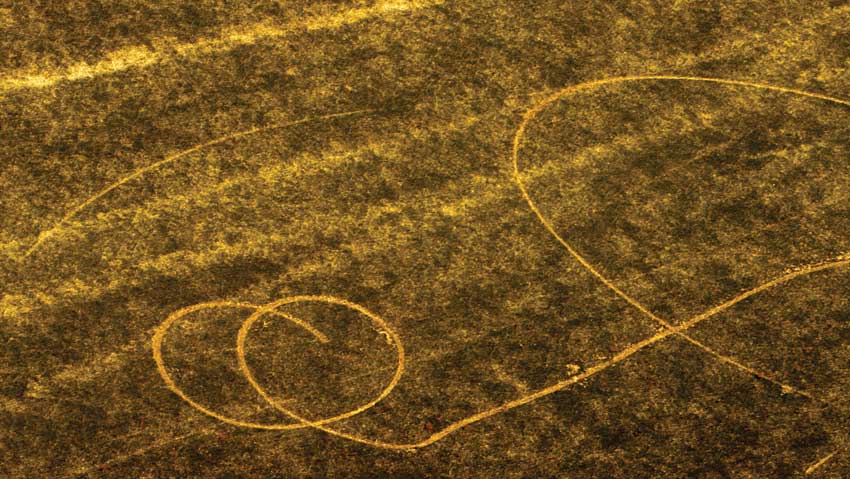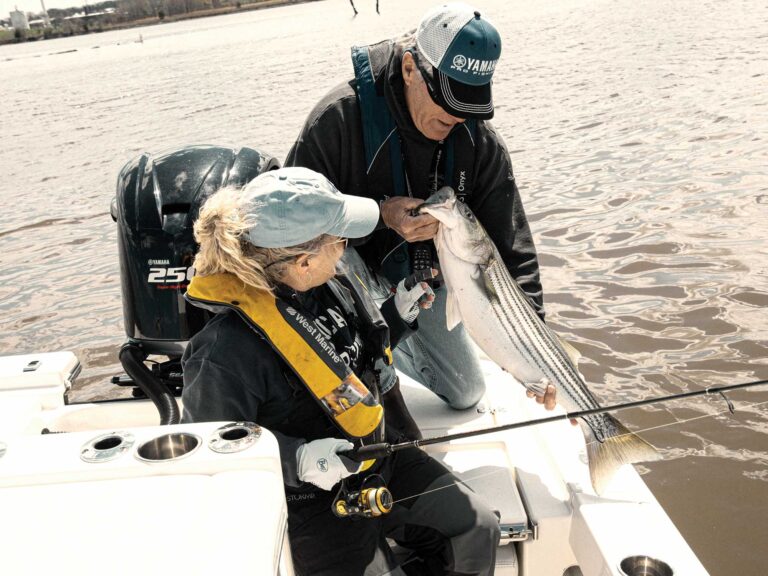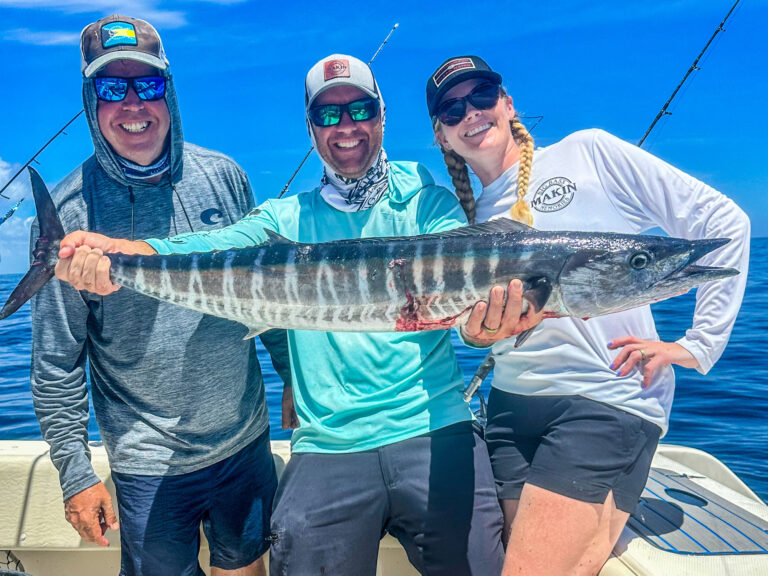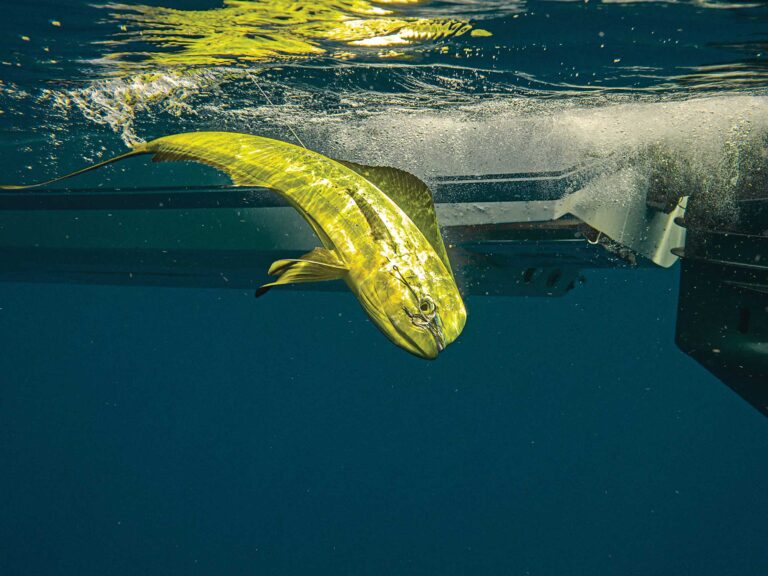
prop scars
Anyone who has waded, paddled or poled in Texas’ vast coastal backcountry can attest to the state’s outstanding flats fishery. If you make an effort to find them, tailing red drum and speckled trout are usually abundant and willing to munch flies. In many areas, that’s beginning to change.
Due to an expanding coastal population and a proliferation of high-tech boats that can run full bell in as little as six inches of water, plus poor flats etiquette and an inaptly named “eco-tourism” airboat business, once productive, lightly trod flats are getting “burned”— in some cases permanently.
**
Bumping and Herding**
A few short decades ago, most of Texas’ highly productive flats were accessible only by low-impact methods, such as wading, paddling, poling or drifting. That isn’t the case today. Contemporary boats designed with low gunwales, tunnel hulls and jack plates can run in impossibly skinny water. To locate fish, more and more anglers have adopted the tactic of screaming across a flat until they spook fish, a technique called bumping. With traditional methods, you can fish maybe a square mile in a day. But by such reconnaissance under power, you can check 10 square miles. Of course, that 10 square miles of water is ruined for anyone quietly stalking fish for a long period of time, and if bumping happens often enough, plenty of folks claim it can and does ruin a flat permanently.
Even worse is the practice of herding. Boats run the perimeter of an area, herding all the redfish into a corner or a deep hole, and then stop upwind of them and throw live bait into the herd. These anglers will fish only a couple of minutes because as soon as they hook a fish, the commotion scatters the herd and they have to round up the redfish again.
Then there are the inappropriately named “eco-tourism” operations that employ lightning-fast go-anywhere airboats. One pass from these boats on or even near the flat, and the fishing is over. “The impact on the redfish is undeniable,” says Capt. Billy Trimble, an area guide. “As soon as the first airboat approaches an area, all the redfish quit feeding and start running in nervous packs, looking for deeper water or a way out of a lake.”
Scarred Ecosystem
Recent flyovers reveal large areas where sea grass has been mowed down by outboards, leaving copious prop scars in some of the most historically productive flats. While the design of high-tech shallow-draft boats might allow anglers to cross a flat without causing significant damage, when that boat needs to get back on plane after stopping to fish, prop scars are inevitable. Aerial photographs show plenty of crossing scars, but more prevalent are the donut scars left by boaters trying to jump their boats out of places they never should have been.
Shallow-water sea-grass meadows are among the most critical and productive marine habitats on earth. They provide vital ecosystem services, such as sediment stabilization promoting water clarity and preventing erosion, oxygenation of the water column and sediment, and nutrient cycling, which can prevent large-scale algal blooms. Sea grasses form the foundation of the food web, as well as protection and shelter for larvae and juvenile and adult fish. It’s certainly not a secret that redfish and trout use sea grass to ambush prey, so it would make sense that the fewer contiguous grass meadows there are, the fewer bait and predators that will be present.
To some extent, this has actually been demonstrated in Redfish Bay, a component of both the Aransas and Corpus Christi ecosystems with about 50 square miles of prime fishing habitat, including 14,000 acres of submerged sea-grass beds. Eleven years ago, the Bay was designated a scientific area for the purposes of protecting and studying sea grasses. From 2000 through 2005, three shallow fishing areas were designated voluntary no-prop zones and marked with signs visible to boaters. These proved to be worthless in reducing sea-grass damage. So a regulation was imposed in 2006 making it illegal to uproot or disturb sea grass with a propeller.
While there have been fewer than 20 convictions since then, the regulation has been an effective deterrent. Propeller scarring has declined significantly. That shows that a little regulation could go a long way in reducing not only habitat damage but also user conflicts between those in high-speed fishing boats and those who prefer to pole, wade or otherwise proceed at a slower pace. Guides and anglers also report a dramatic improvement in the flats fishing since the law was implemented.
As for the rest of Texas’ vast expanse of backcountry flats, there is tremendous amount of concern that the traditional low-impact fly-fishing for tailing redfish that has brought so many anglers to the state could go the way of the passenger pigeon.
**
Making the Case**
A group of traditional low-impact anglers, along with some managers, have begun making the case for low-impact fishing areas (LIFAs), which would be open to wading, paddling, poling and drift-fishing. Use of a main engine to propel a motorized vessel would be strictly controlled. Electric trolling motors would be allowed, and consideration given for hunting seasons. Access and egress points that would provide reasonable paths for main-engine use under various wind and tide conditions would be a part of every LIFA.
Certainly LIFAs are needed. They would prevent increasing grass-flats damage by providing easily enforceable habitat protection, protect opportunities for various outdoor experiences that require quiet and stealth, and permit people to interact with nature on its own terms. Last, but certainly not least, LIFAs would segregate incompatible activities.
This is not a new concept. Such managed areas are used extensively in Florida. The state implemented its first pole-and-troll zone in 1992. Probably the most well known is the 3,143-acre section of the Mosquito Lagoon that was designated in 2006 due to a situation almost identical to the one developing in Texas. The most recent addition to Florida’s pole-and-troll areas is the 8,800-acre Snake Bight zone, in Everglades National Park. All of Florida’s managed areas have been successful, not just from a habitat-protection standpoint but from an angling one as well.
Such managed areas make sense, but a loud minority thinks the intent is to close off portions of public waters. It’s quite the opposite. Such managed areas actually increase public availability of flats resources, as they increase the carrying capacity of the habitat by reducing the negative impacts of motorized craft and fish herders. Many low-impact users can productively share a LIFA where fishing would have been ruined by just a few high-impact users.
Anglers must understand that managed access does not equate to lost access. It means regulating the use of a public resource so that productive flats provide good fishing long into the future.
Spreading Damage
This is not restricted to Texas alone. Flats and bays around the country are getting more and more crowded, leading to additional habitat damage and user conflicts and a decline in the quality of angling experiences. For flats to remain healthy and sustainable, the fishing community needs to come together and figure out a way to share the resource. If not, we could face the loss of those remarkable shallow-water fisheries and also run the risk of having draconian measures imposed on us, including the very real possibility of no-fishing zones, which are already being discussed behind the scenes by managers fed up with habitat destruction and the failure of the recreational-fishing community to self-police.









